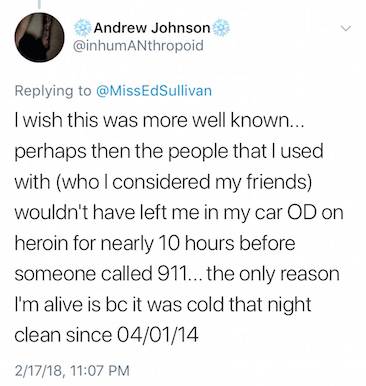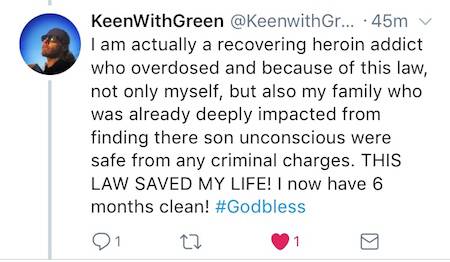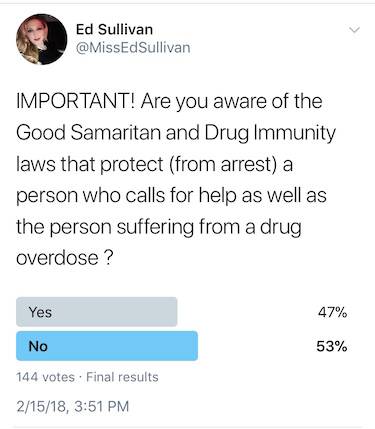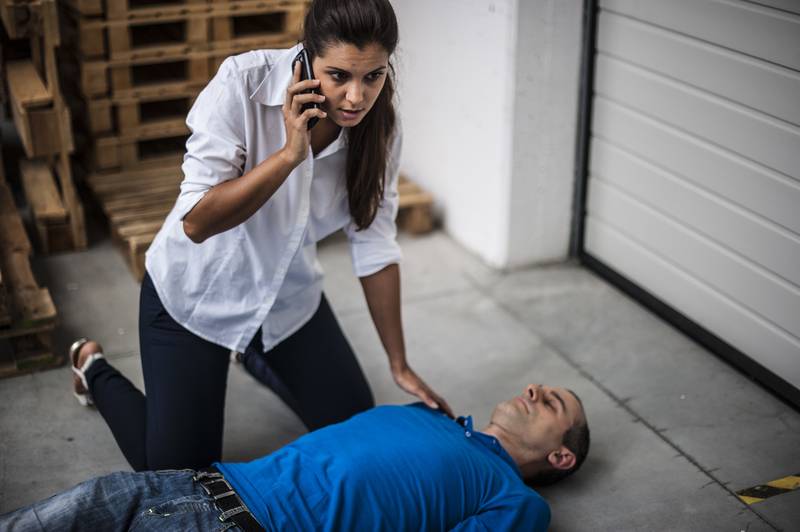How to Prevent Overdose Deaths: 911 Good Samaritan Laws
The 911 Good Samaritan Law is designed to encourage people to call and seek medical attention when experiencing or witnessing an overdose. The law protects the person overdosing as well as the witness from being charged or arrested for being under the influence of drugs, possession, and paraphernalia. Its implementation is a valiant attempt to remove any apprehension that people may experience when faced with the decision to call or not to call. However, it is only effective in doing so if people are aware of its existence. If a person is unaware they will receive immunity, their fear of consequences will still be present. Fear causes hesitation and in many cases leads to the decision not to act at all. This is a vast issue with grave consequences.
We are in the midst of a drug epidemic that is destroying American families all over the nation. With something as prominent and affecting as this, it would seem surprising that the media coverage and level of conversation aren’t fitting for the level of crisis that’s occurring. With headlines revolving around Trump, #MeToo, and mass shootings, where does the opioid epidemic fit in and why don’t people seem to care at the same level? It devastates a community when a high school athlete dies in an auto accident or a young mother loses her battle with breast cancer, but when a person succumbs to a drug overdose, aside from immediate family, society is aloof and often dismissive. Overdose fatalities do not garner the same response as deaths caused by other diseases or accidents because of the stigma of addiction, which is perpetuated by an uninformed society that desperately needs to be educated. Spreading awareness and educating the public would change this culture and ultimately save lives that would otherwise have been tragically lost.

In California, the most blatant attempt to inform and spread awareness can be attributed to a grieving mother, Denise Cullen, who lost her son Jeff in 2008 to a drug overdose. She transformed her grief into action and launched Broken No More, a nonprofit organization committed to spreading awareness of Good Samaritan Laws. Denise can be thanked for raising over $10,000 to go toward a Naloxone shortage in 2012 and a billboard in Los Angeles outside of Cedar Sinai Medical Center that was displayed from April through May in 2015.
California law enforcement’s role in spreading awareness is weak, their participation lacking. In the Rancho Cucamonga Police Station lobby is not one poster, pamphlet, or sign giving any information on the laws. When asked if Upland’s Police Department is currently training or encouraging officers to spread awareness Sergeant Rob Steenerson of Upland Police Department stated, “the laws are probably more well known in drug circles but it’s not something we go out and advertise. We would rather not have these people using drugs and I don’t know if there is some sort of place they would get that information in pamphlets or something but we don’t have any flyers or community outreach, I’m not aware of anything we actually do.”
I conducted a recent Twitter poll which concluded that 53% of participants had never heard of Good Samaritan Laws. Admittedly the results were not as staggering as other factors seem to indicate. Although, people participating in Twitter polls are likely more politically and socially informed than people in “drug circles” might be. Not because addicts are uninformed people, but because when in the depths of addiction, people can live in a bubble, cut off from the outside world. To prove this theory, I wandered into a local Narcotics Anonymous meeting and waited for the speaker to finish. When the meeting leader asked, “Are there any NA related announcements?” I jumped up and told everyone about the law and asked to take a poll. This randomly selected Narcotics Anonymous meeting that gathers each Friday at 8 pm in the city of Rancho Cucamonga, had 23 attendees and only one of those attendees raised their hand when asked who was aware of the 911 Good Samaritan drug immunity laws.
In 1999, Texas was the first state to enact the Safe-Haven Law that allows a parent to leave their unharmed baby at a fire station or hospital. By 2008, all 50 states had adopted the law. Like the 911 Good Samaritan law, the Safe-Haven law was created to encourage people to save a life rather than throw it away. Unlike the 911 Good Samaritan law, the Safe-Haven law received so much publicity, it is now a common knowledge law. As a result, countless lives have been saved.

Passing the law is admirable; it is without a doubt, a step in the right direction. However, acknowledging the law is only effective in alleviating fear to involve the police, if people know they are protected, is equally as important and yet ironically ignored. To be frank, the 911 Good Samaritan Laws are completely useless if no one knows about them. There should be a sign in every police department lobby. There should be billboards outside of hospitals in every county. There should be public service announcements, social media advertising, and television news features. There should be community outreach and specific training for law enforcement, who is in constant contact with drug-addicted individuals, to spread awareness and inform.

For more information on which states offer which protections, please visit https://www.samhsa.gov/capt/sites/default/files/resources/good-samaritan-law-tool.pdf.
To check out Broken No More, the NonProfit committed to spreading awareness, please visit http://broken-no-more.org/.
By Emily J. Sullivan 03/26/18
Republished from https://www.thefix.com/how-prevent-overdose-deaths-911-good-samaritan-laws

